![]()
This page is also available in French
![]()
Few buildings in Paris are so full of Berliozian associations as the Conservatoire. First founded in 1784 as the École royale de chant et de déclamation, then refounded in 1795 as the Conservatoire national de musique et de déclamation, its concert hall was enlarged and inaugurated in 1811 to house the Société des concerts français. At the same time as the construction of the new concert hall the library of the Conservatoire was also established (1808).
It was in the library of the Conservatoire that the young Berlioz, soon after his arrival in Paris in November 1821, started to study and copy the scores of Gluck and Spontini, then from 1828 onwards those of Beethoven as well. At first only a private pupil of Lesueur, he enrolled formally as a student at the Conservatoire in autumn 1826, though it took him four attempts before he obtained in 1830 the first prize at the Prix de Rome competition for composition. It was in the concert hall of the Conservatoire that he gave his first orchestral concerts, on 26 May 1828 and 1 November 1829; the concert in 1828 included the first performances of his Waverley and Francs-Juges overtures. It was in the same hall that he first experienced, from late 1827 onwards, the revelatory performances of Beethoven by the newly formed Société des concerts du Conservatoire under François Habeneck (the first concert took place on 9 March 1828). Subsequently, several of Berlioz’s major works received their first performance in the hall – the Symphonie Fantastique on 5 December 1830 (Habeneck conducting); Lélio (with the Fantastique) on 9 December 1832 (Habeneck again conducting), with Harriet Smithson among the audience, witnessing the symphony she had unwittingly inspired; Harold en Italie on 23 November 1834 (Girard conducting); and Roméo et Juliette on 24 November 1839 (Berlioz himself conducting), before an audience that contained all the intelligentsia of Paris. It was at a concert on 16 December 1838 that included both the Fantastique and Harold en Italie that Paganini knelt publicly before Berlioz and soon after made the gift of 20 000 francs which enabled Berlioz to write Roméo et Juliette (Memoirs, chapter 49). For a complete listing of all the concerts given by Berlioz in Paris, including at the Conservatoire, see the page Concerts and performances 1825-1869 with its associated page of Texts and documents.
Yet Berlioz never managed to win the recognition he deserved from the leading musical institution in France, and his ambivalent relationship with the Conservatoire runs as a continuous thread through much of his Memoirs, from the time of his first brushes with the director of the Conservatoire, the aged Cherubini, in 1822. From 1843 onwards he was in practice excluded from performance there, and his own brilliance as a conductor incited jealousy. He failed to obtain any post at the Conservatoire higher than Librarian (Assistant Librarian in 1838, Librarian from 1850). It was only late in his career that relations improved, and he eventually donated to the library of the Conservatoire his musical manuscripts (the draft of his letter of 25 March 1863 to the Committee making the donation is extant: Correspondance générale no. 2702).
The hall of the Conservatoire, famous in its time for its acoustic, unlike that of the overlarge Opéra (it was known as the Stradivarius of concert halls), is small in size and had in Berlioz’s time a seating capacity of only about 1000. It has thus a very intimate character, which encourages close contact between performers and audience, and between different sections of the audience. Until 1985 the hall remained structurally similar to what it was in Berlioz’s day, except that the upholstery and decoration were completely overhauled in 1865-1866. In 1985 extensive renovations and changes were made, which have reduced the size of the stage, the seating capacity of the hall, and affected its acoustic characteristics (see The Misadventures of the Hall of the Conservatoire by Pierre-René Serna on this site).
The panelling on the first tier displays portrait medallions of playwrights and tragedians. The medallions on the second tier are those of composers: from left to right (facing the stage) Meyerbeer, Halévy, Hérold, Donizetti, Spontini, Grétry, (Orphée), Boïeldieu, Méhul, Weber, Mendelssohn, Cherubini, and Rossini. By far the greatest name of them all, that of Berlioz, is conspicuous by its absence.
On the occasion of the bicentenary of Berlioz’s birth, the German multinational company Bayer, in cooperation with Bayer France and the Association Nationale Hector Berlioz, has taken the initiative of installing a commemorative plaque (see below) on the façade of the Conservatoire. This plaque was inaugurated in a ceremony on 14 December 2003, which was followed by a concert in the hall given by students of the (new) Conservatoire.
Many other changes have taken place since Berlioz’s day. The present building now houses the Conservatoire National d’Art Dramatique, while the music section has moved to the new Paris Conservatoire at the Cité de la Musique (where the library bears the name Médiathèque Hector Berlioz). As may be seen from contemporary engravings, the main entrance in Berlioz’s time was on the rue du Faubourg-Poissonière, where the present entrance to the Post Office building is, with another entrance on the rue Bergère (cf. the story in the Memoirs, chapter 9). This part of the Conservatoire has thus disappeared. Nowadays the entrance is by a new door on the rue du Conservatoire, which was only opened in 1853 (as was the rue Sainte-Cécile which intersects it).
For a listing of all the performances of Berlioz’s music at the Conservatoire after his death down to the First World War, see the page The Paris Conservatoire and Berlioz: 1869-1914.
![]()
Unless otherwise specified, all the modern photographs reproduced on this page were taken by Michel Austin; other pictures have been scanned from engravings and books in our own collection. © Monir Tayeb and Michel Austin. All rights of reproduction reserved.
Please note that the quality of the photos of the hall’s interior has been affected by the low light inside the building.
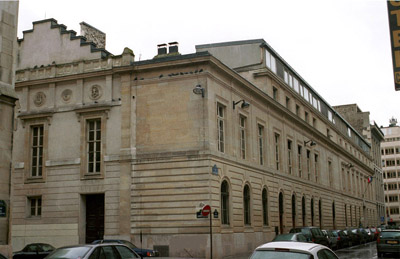
The street on the right is the rue du Conservatoire, where the main entrance is to be found now, that on the left the rue Sainte-Cécile. The rue Bergère can be seen at the end of the rue du Conservatoire.


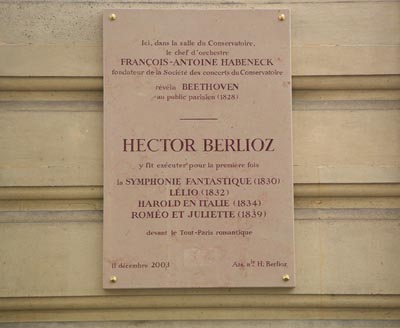
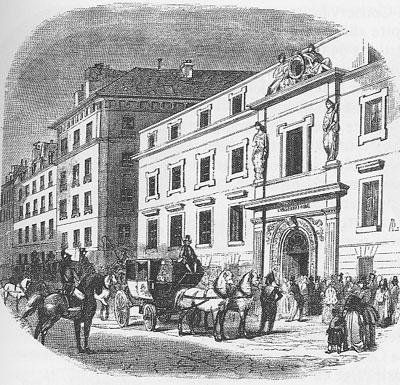


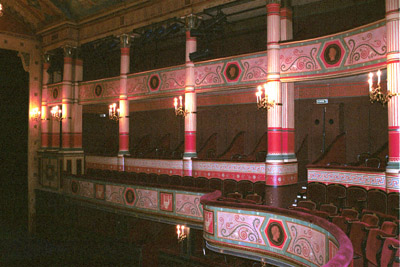

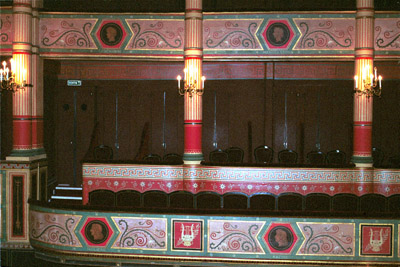

This bas relief is situated above the main staircase in the entrance hall; it represents the goddess Minerva distributing crowns to personifications of the main disciplines taught at the Conservatoire.
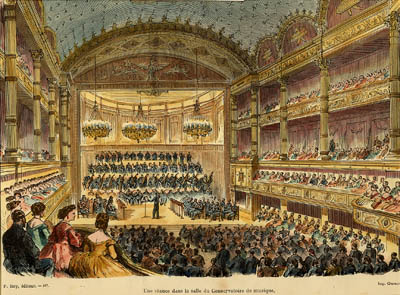
Engraving of 1888 in our own collection. It should be noted that the engraving makes the hall appear somewhat larger than it actually is, as a comparison with the photographs above will show.

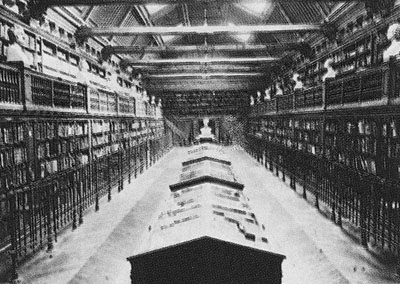
An original copy of this photograph is in the Bibliothèque nationale de France, Paris. The library has now been converted to a student rehearsal room (see picture below).
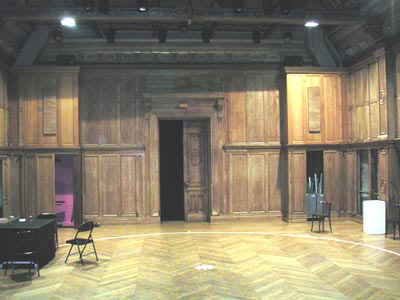
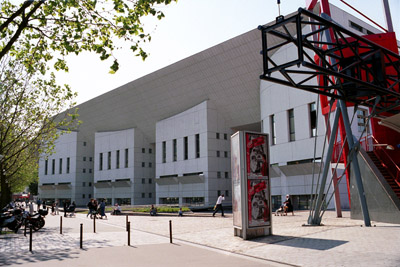
![]()
© (unless otherwise stated) Monir Tayeb and Michel Austin for all the pictures and information on this page.
Copyright notice: The texts, photos, images and musical scores on all pages of this site are covered by UK Law and International Law. All rights of publication or reproduction of this material in any form, including Web page use, are reserved. Their use without our explicit permission is illegal.